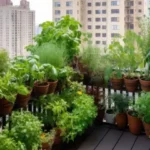Vegetable gardening can take up a lot of space, which some people don’t have. Maybe your backyard is paved or neatly landscaped, making digging up a vegetable plot difficult. This guide introduces raised bed vegetable gardening for beginners, which solves many of the abovementioned challenges while providing benefits for older or less mobile gardeners.
Raised bed vegetable gardening allows more control over soil quality and moisture levels and primarily benefits those living in areas with limited space or who prefer a no-tilling option. Because raised bed gardening eliminates the need for tilling, it saves time and is much easier on your back, reducing the overall labor growers need to set up their green oasis.
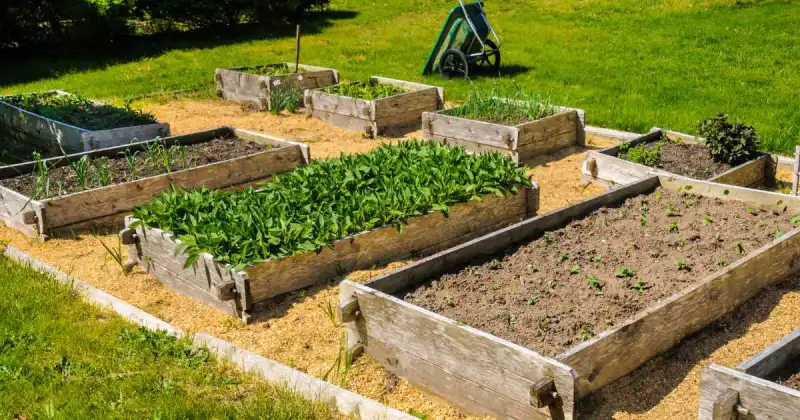
Utilizing raised beds for cultivating vegetables is just one of many alternative gardening ideas for container gardening and is the perfect solution for any size garden. Whether you are just starting or have been tending plants for years, raised beds offer many benefits and make growing vegetables easier. With essential tips and advice, anyone can succeed.
This article explains everything you need to know as a beginner in raised bed vegetable gardening, including the advantages and drawbacks, considerations before starting, and what vegetables grow best in elevated beds. So, without further ado, let’s discover the beautiful gifts of this unique growing technique and determine how to build your own.
Humble Highlights
- Save time and discover the unusual benefits and disadvantages of raised bed gardening as we expose the truth of this fascinating technique so you can determine if this innovative practice is good for you and your family!
- Save money by discovering the 4 rewarding considerations of raised bed gardening BEFORE building or investing in one so you can stop guessing and unlock the secrets of this gardening art – no matter where you live or how much room you have.
- Discover these 5 trusted ways to maintain your raised bed vegetable garden to boost plant growth and provide superior care for your plants, all while saving time!
What Is Raised Bed Gardening
Raised bed gardening is an easy and efficient way to grow vegetables in your backyard. It involves building or buying raised beds, filling them with soil and compost, and planting the desired vegetables. Planning a garden this way allows for better control over soil conditions, drainage, pest management, and weed growth.
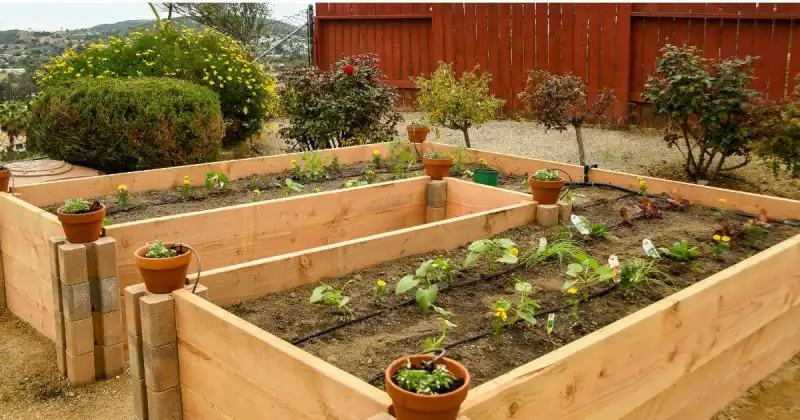
Setting up a raised bed vegetable garden begins with understanding the process, from designing the garden’s layout to choosing plants that will flourish within.
Then comes the selection of materials such as wood, metal, plastic, or stone for constructing the raised beds, selecting the appropriate soil, and installing irrigation systems if necessary. 1
Check Lowest Prices On Raised Bed Vegetable Gardening Books Today
Finally comes the most rewarding part of determining where to plant different types of vegetables according to their growing demands and lighting requirements.
With careful consideration given at every step before construction, your raised bed vegetable garden can look great, produce abundant harvests, and reward you throughout the year.
Benefits Of Raised Bed Vegetable Gardening
There are numerous benefits of raised bed vegetable gardening compared to in-ground growing methods. Once you know the benefits of growing your vegetable this way, you may never return to traditional techniques.
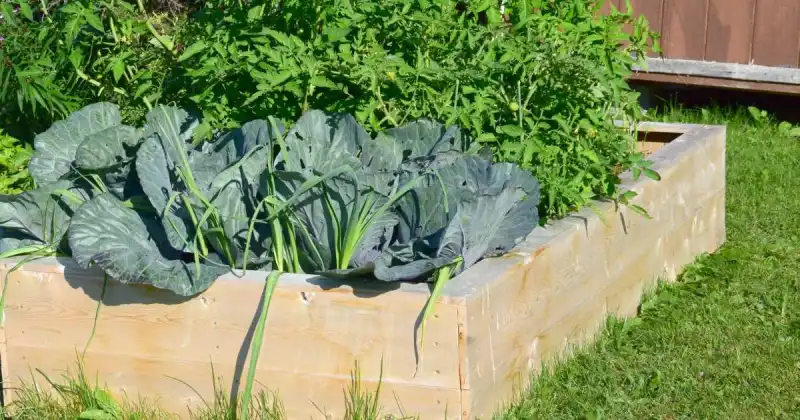
Here are the main benefits of raised bed vegetable gardening:
1. Can Be Used In Any Garden Space. One of the main reasons people are limited in the vegetables they cultivate is the need for more space. Raised beds can be situated on paving, gravel, grass, or soil so you can use your entire area without digging. 2
2. Reduced Weeding. There are several ways to reduce weed growth in raised beds, such as adding cardboard to the base if it sits on the soil. Because raised beds are standalone containers, they are also easier to treat for weed growth before the situation gets out of hand.
3. Improved Drainage. Unlike ground soil, raised vegetable beds won’t get walked on, stopping dirt from becoming compressed and compacted. As the earth remains soft and crumbly, moisture is absorbed more efficiently, air flows more freely to delicate root systems, and drainage is improved.
Check Lowest Prices On Square-Foot Gardening Books Today
4. Increased Soil Quality And Aeration. Since your raised bed is separate from your garden, you can fill it with quality soil amended with compost or other organic matter, giving your plants more nutrition and better overall health. The soil’s softness also increases aeration, improving oxygen uptake for plant roots.
5. Easier Accessibility. A raised vegetable garden makes it easier to access your vegetables, reducing bending, twisting, and turning when tending your crops. Your back will thank you! 3
6. More Control Over Pests and Diseases. You can position a raised bed away from insect hotspots. Raised beds are also easier to implement netting and other pest and animal control measures than traditional in-ground gardens.
All the benefits mentioned above make raised bed vegetable gardening an excellent choice for anyone looking to maximize their yields and make it easier to maintain healthy plants.
The helpful video below answers many questions about raised bed gardening. Remember, much of what’s required to operate and maintain raised beds is the same as expected for any vegetable garden. Still, they can be a natural feature, much easier to work with, and you can control the soil quality your plants enjoy.
Disadvantages Of Raised Garden Beds
Gardening is often a peaceful, rewarding activity but comes with challenges like any other task. This truism applies to raised bed vegetable gardening, and you should consider some potential downsides.

First, raising your garden beds off the ground can be expensive unless you plan ahead and shop around for materials. If you’re not careful, the cost of purchasing wood boards to construct the frame and soil to fill your beds can add up quickly.
Second, unless using cedar, raised beds made from wood may need to be treated (which I don’t recommend) to help protect them from constant weathering, which can cause them to rot and decompose quickly. 4
Third, creating extra space in a tight backyard can require more thought and effort than anticipated. By doing so, growers should consider the size of their garden, with more extensive operations taking away from an area you would otherwise use for recreational activities or other landscaping features.
One final consideration is that raised bed vegetable gardens may require frequent watering and maintenance throughout each growing season as they can dry out quicker than ground soil.
With all these factors combined, those with limited time or resources could be overwhelmed by the extra upkeep required to implement raised beds.
However, it’s important to weigh both the pros and cons when deciding whether or not to build a raised vegetable garden. Although this type of gardening offers several benefits, it may be more expensive and, as with all home gardening, requires dedication from the grower to reach optimal results.
What To Consider Before Building A Raised Vegetable Garden
Building a raised vegetable garden yourself can be highly rewarding. But before getting started, there are some essential factors to consider that will determine the success of your project.
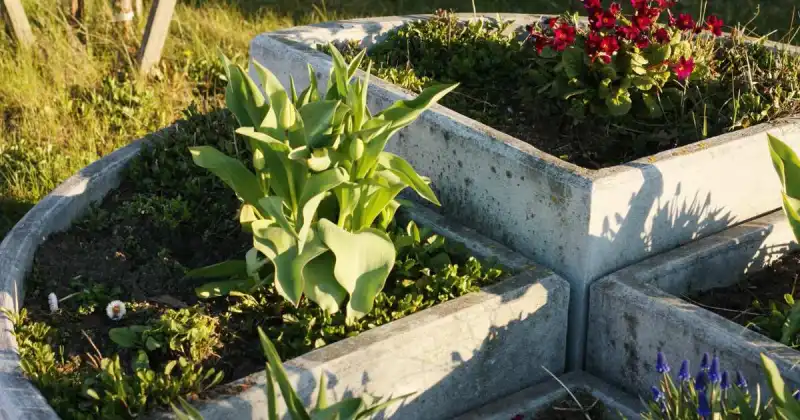
Factors To Consider Before Building A Raised Vegetable Garden
1. Size: Before spilling some dirt and dropping in some seeds, determine the space for your garden. Measure the area in feet and draw up a rough plan with pencil and paper if needed. You don’t need to be Picasso, but you need to have at least an idea of the general size of your future food garden.
2. Soil Type: Select soil best suited for vegetables and herbs with good drainage capabilities. Using only native soil won’t offer enough nutrients for your crops. Fortunately, options are available at your local big-box retailer. Consider starting a compost pile in an open-air heap or tumbler to help provide ongoing plant nutrition.
Check Lowest Prices On Compost Tumblers Today
3. Location: Find an area for your raised bed with plenty of sun exposure for maximum growth potential and protection from wind or other elements like rain. 5
4. Budget.:Determine what materials you need to build the raised bed garden within your allotment while providing quality products. While some may reach for wood, others for galvanized steel or stone. The choice is yours, but there is no better time to decide what materials you’ll use and their longevity.
Check Lowest Prices On Galvanized Raised Garden Beds Today
Make sure to think about how you want it laid out, what kind of plants you would like to grow, and any other specifics related to drainage or irrigation so everything works together come planting season.
How To Build A Raised Vegetable Garden
Constructing a raised bed is relatively straightforward and can be completed in a few hours, depending on its size and complexity. Here are some critical tips for putting together your raised bed to ensure you get off to a good start.
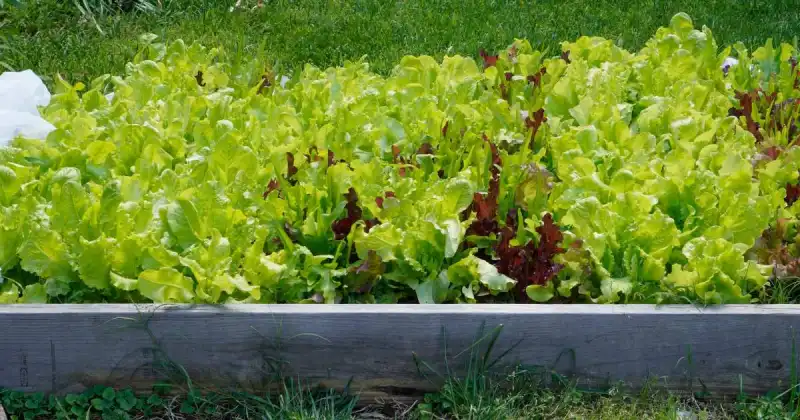
- The first step in any raised bed project is deciding where it should go and what type of material will be used for construction.
- Place your raised bed in an unshaded area to ensure your vegetables get adequate sunlight. Also, consider choosing a north or south-facing position to provide your crops with as much light as possible. If you live in the northern hemisphere, a south-facing arrangement is best, whereas a north-facing garden is best in the southern hemisphere. 6
- Make sure to select materials that match the aesthetic of your outdoor space. Of course, this comes down to personal choice, but consider constructing raised beds from wood, metal, concrete blocks, bricks, and stones. Remember that certain materials may require maintenance or replacement over time.
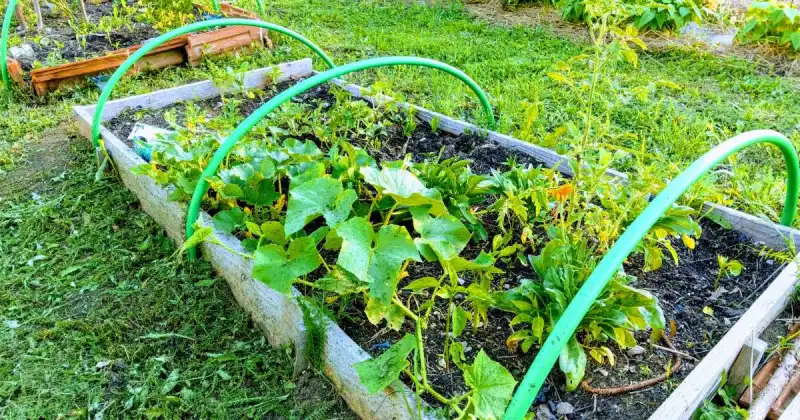
- Decide the size of your raised bed before purchasing materials, as suppliers can often cut wood to size at purchase. Go as big or small as you like, or make several beds to suit your space requirements.
- To begin, choose a typical square or rectangular raised bed measuring 6ft x 4ft or 3ft x 3ft. When constructing your raised bed, leave it open or closed at the base or suspend it with a raised platform or legs.
If adhering to this six-inch guideline, I suggest tilling another six inches into your soil to ensure the applied compost and fertilizer are incorporated evenly for all your plants to enjoy. To avoid tilling altogether, create a raised bed one foot tall.
Check Lowest Prices On Raised Bed Garden Kits Today
How To Build A Raised Vegetable Garden With Concrete Blocks
Building a raised vegetable garden with concrete blocks may seem intimidating, but following this DIY guide is simple and straightforward. You can quickly create a raised bed with just a few basic materials and tools.

1. First, purchase the right concrete blocks for your project. Remember, the blocks you choose need to be solid enough to support the weight of soil and plants.
2. Make sure the ground is level, and if you have chosen to use a base, lay it out first and ensure it is stable. Lay the first level of blocks into the desired shape. Depending on your raised bed garden’s height, consider cementing the blocks in place or driving rebar between them, creating foundational and structural support.
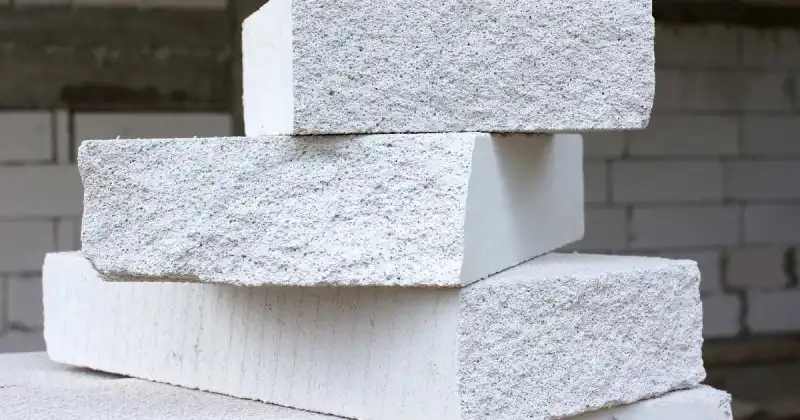
3. Start stacking up your blocks securely into columns that will form the walls of your raised bed. Cross-stack the blocks to strengthen the structure, cementing each one into place. 7
4. Fill any remaining gaps between the blocks with cement or mortar mix, and leave to set for 24 hours. Stone or concrete raised beds are generally not designed to be moved due to their weight, so having a raised platform or legs won’t be necessary or practical.
If you have built a raised bed with an open bottom on soil or grass, consider covering the entire base with cardboard or other biodegradable material. The cardboard helps suppress weeds from growing through, adding nutrients to the ground beneath as it decomposes. Adding a layer of gravel or sand will also help drainage.
Check Lowest Prices On Chicken Wire Today
How To Build A Raised Garden Bed With Wood
Building a raised garden bed with wood is an easy and cost-effective way to make the most of your vegetable gardening space. This DIY guide will show you how to create a sturdy, attractive raised bed in no time.

To start, here’s what you’ll need.
- Wood. Choose untreated woods like cedar or redwood for durability and longevity. It would help to avoid pressure-treated lumber, as it can contain harmful chemicals that can leach into your garden soil and damage plants.
- Tools. Popular choices for raised beds include a power drill, saw, level, measuring tape, shovel, hammer, brackets, nails, and screws.
Check Lowest Prices On Power Drills Today
When building a raised bed out of wood, you have several options. You can choose an open or closed base, create legs, or add a raised platform inside for extra height.
One good DIY option for legs is to add a base and place a concrete block under each corner. This option allows you to move the raised bed and platform independently to new locations. 8
You can add a raised base after the first or second layer of the wall has been built. To do this, lay some wood across the wall and screw it firmly in place. Afterward, considering the six-inch minimum mentioned above, you can continue to make the walls as high as you desire.
Next, create the walls for your raised garden bed using boards cut from your chosen type of wood. It’s important here that each board fits tightly against its neighbors, or gaps may appear, which may likely weaken the overall structure over time.
Assemble these boards around the perimeter one layer at a time until they reach your preferred height. To increase stability, use corner brackets or L-brackets at each corner. Finally, use galvanized screws or nails to fasten everything securely together.
Check Lowest Prices On Galvanized Screws Today
Creating a wooden raised garden bed is an excellent solution if you’re short on space but want to grow veggies at home. With just some essential tools and materials, this DIY project will take little time.
Filling A Raised Vegetable Garden
Once you have constructed your raised bed, it’s time to fill it with soil. Choosing suitable soil is essential to providing a healthy environment for your plants. Start by filling the bed about 3/4 full with a quality potting mix or well-aged compost that has ideally been tested for nutrients and pH levels.
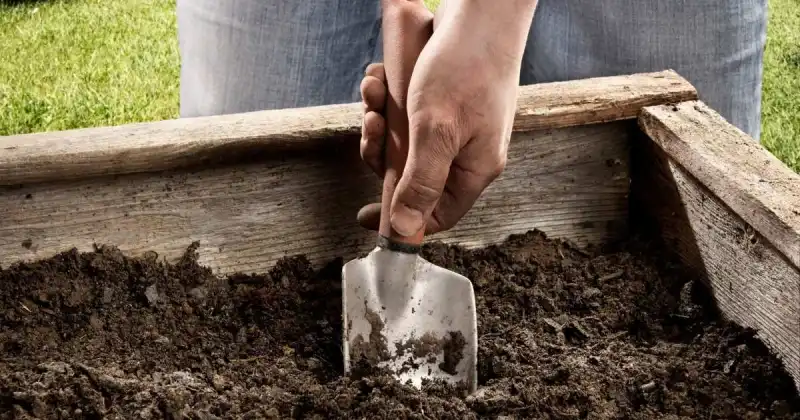
Depending on the plant’s requirements, you can add amendments like aged manure, bark mulch, peat moss, perlite, vermiculite, or other organic materials. These additions will help improve drainage by creating gaps within your soil structure and increasing the soil’s aeration so roots can easily access air and water. 9
Next, make sure to incorporate fertilizer into your raised bed soil. Although fertilizers are necessary nitrogen, phosphorus, and potassium sources, they provide essential nutrients for helping vegetables grow strong. However, it’s vital not to use too much at any given time, as an abundance may burn young seedlings and cause root damage.
Check Lowest Prices On Vermiculite Today
Composted manures are excellent natural alternatives to chemical fertilizers because they release nutrients over time, act as a mulch, retain soil moisture, regulate temperature, and improve soil texture and structure.
After adding all the necessary components, mix them well before planting your vegetables. Regularly check the moisture content of your garden bed since adding composts and amendments tends to dry out the soil quickly due to its increased porosity.
Check Lowest Prices On Perlite Today
Picking an array of suitable vegetables tailored for small spaces makes gardening easier now that you have filled your raised bed with nutrient-rich soil.
Easy Vegetables To Grow In Raised Beds
Tomatoes, peppers, cucumbers, eggplants, and squash are famous, easy-to-grow options that thrive well in raised beds due to their relatively shallow root systems. Deeper raised beds are suitable for root vegetables like carrots, potatoes, beets, turnips, onions, sweet potatoes, and radishes.

Check Lowest Prices On Tomato Seeds Today
Other good options include herbs like basil, dill, thyme, and oregano around the edge of your garden bed. Ringing your crops with herbs adds an attractive border while leaving plenty of room for other plants, like lettuce or spinach, which can easily fit into smaller spaces between herbs. Herbs also do very well in raised beds because they don’t need much space, and their strong scent keeps many pests away.
No matter which type of veggie you choose to plant in your raised bed garden, ensure you use quality soil and fertilizers tailored specifically for vegetable growth and follow instructions on the seed packets or plant labels carefully. 10
Check Lowest Prices On Herb Seed Mixes Today
How To Maintain A Raised Vegetable Garden
Caring for a raised vegetable garden requires regular maintenance and attention to keep it looking good and caring for the plants and vegetables growing inside. Maintaining your garden beds includes:
- Treating Wood
- Watering
- Pest Control
- Adding Fertilizers
- Pruning

Treating Wood
Whether you have bought and assembled your raised beds or built them yourself, wood will rot and break down over time. Ideally, you will have selected untreated options like redwood or cedar for their durability which can last for many years within the elements.
Some growers treat their wood to prolong their usage. As mentioned, I caution against this as many treatments leach chemicals into your soil, harming your plants.
Watering
I have already mentioned that watering is one of the most critical tasks in raised gardens, as vegetables need to stay hydrated throughout their growing season. Depending on your region, climate, and weather, you may need to water more or less often. However, it’s generally best practice to check the soil moisture daily and provide enough water to saturate the soil beneath. 11
Check Lowest Prices On Soil Moisture Meters Today
Although your plants will love this ideal environment, you may not. Consider installing a drip irrigation system, which is surprisingly easy to set up, to keep your plants watered.
Check Lowest Prices On Drip Irrigation Today
Pest Control
Pests can wreak havoc on any vegetable garden if not appropriately controlled. Pay close attention to your plants and watch for signs of damage, such as holes in leaves, stunted growth, or discoloration.
If you notice anything suspicious, immediately identify the pest and provide proper treatment before the infestation spreads and causes additional destruction.
Check Lowest Prices On Row Covers Today
It would help if you also considered using insecticidal soap or natural predators like ladybugs to help keep pests away from your plants. Netting or row covers are other excellent options that can be easily attached to raised beds.
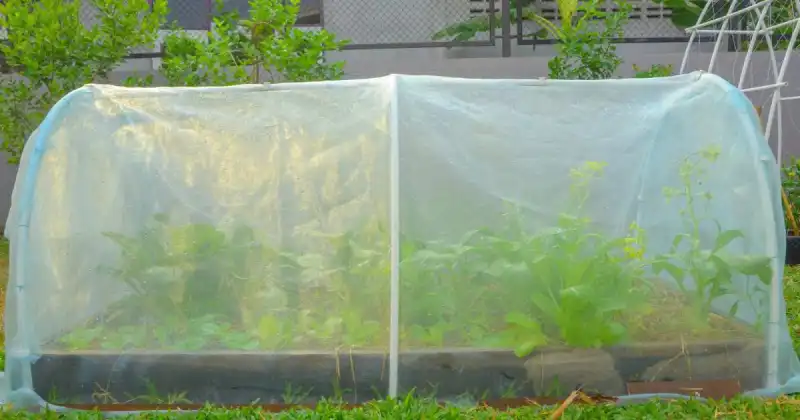
Adding Fertilizers
Fertilizing is another crucial component of maintaining a healthy garden environment. It’s best to select a suitable organic fertilizer for your flourishing vegetables.
Unlike ground soil, dirt in raised beds can’t pull nutrients from the surrounding soil, so adding nutrients atop the surface by hand is essential. Roots, debris, and waste from previous crops can help fertilize the ground, and you can add earthworms or other beneficial bugs to your raised bed to aid in aeration and fertilization.
Check Lowest Prices On Live Earthworms Today
Pruning
Pruning your vegetables is necessary for maintaining a raised bed. Regularly trimming dead, diseased, or overgrown branches will help promote air circulation and sunlight penetration, benefiting overall plant health. 12
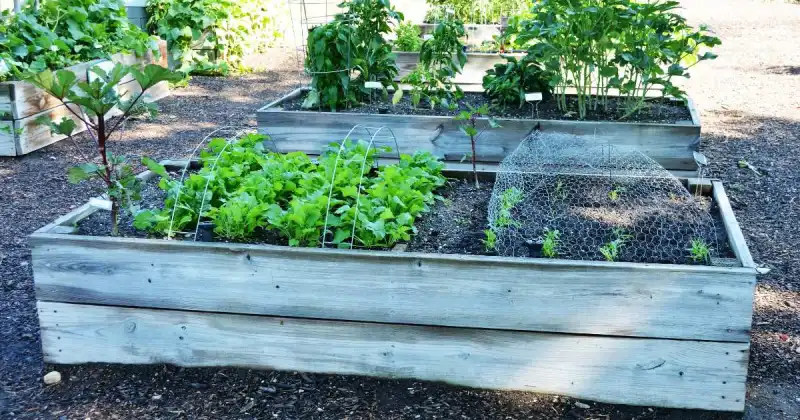
Conclusion
As you can see, raised garden beds suit beginners and experienced gardeners alike, with little or no space in their backyard or even a roof terrace.
In this article, I’ve covered everything from selecting materials for building the beds, choosing plants that will thrive in this setting, and general maintenance. Raised beds have several benefits over traditional in-ground gardens, including reduced weeding, improved drainage, and increased soil quality.
Although building a raised bed may sound complicated, it isn’t if you follow some simple directions. Wood and concrete blocks are two popular options growers choose when constructing their backyard garden beds. Still, today, you can even purchase entire kits that can make assembly extremely easy.
When finished, filling your raised beds with the appropriate soil mix is essential, as native soil alone won’t do. Ensure there is a mixture of potting mix, compost, native soil, aged manure, peat moss, perlite, and vermiculite to provide your plants with nutrient-dense and structurally sound soil.
If you take it one step at a time and follow the tips outlined, you’ll be able to reap all the benefits of homegrown produce in no time.
Have you erected your own raised garden beds? Let us know your experience by commenting below and connecting with your fellow growers today!
SOURCES
- West Virginia University, Extension – Raised Bed Gardening
- University Of Florida, Gardening Solutions – Raised Beds: Benefits And Maintenance
- University Of New Hampshire, Extension – What Are The Benefits Of Raised Beds And How Can I Construct One Myself?
- University Of Georgia, Extension – Raised Beds vs. In-Ground Gardens
- ResearchGate – Raised Beds For Vegetable Production In Urban Agriculture
- Penn State University, Extension – How To Construct A Raised Bed In The Garden
- University Of Florida, Orange County Extension – How To Build A Raised Bed Garden (Concrete Block)
- United States Department Of Agriculture, National Agriculture Library – Raised Beds & Container Gardening
- Rutgers University, New Jersey Agricultural Experiment Station – Soil For Raised Beds
- Oklahoma State University, Extension – Raised Bed Gardening
- Utah State University, Yard And Garden Extension – Raised Bed Gardening
- University Of Massachusetts, Amherst – Raised Beds

